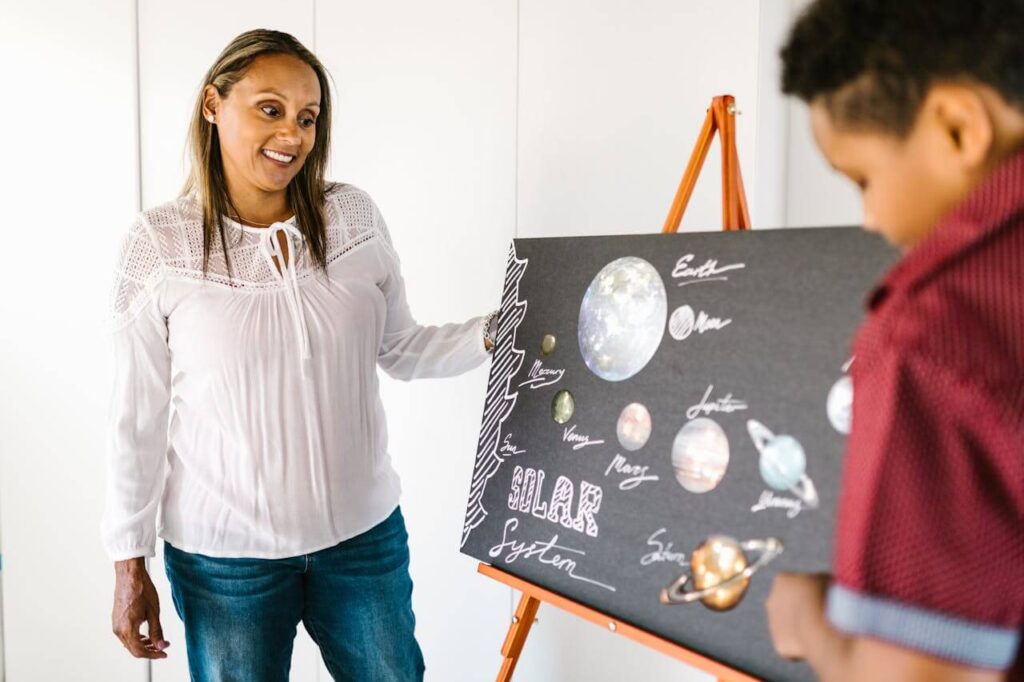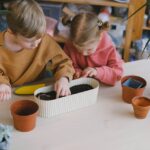Introduction
Picture this: It’s a rainy Saturday afternoon, and instead of hearing the dreaded “I’m bored!” chorus, your kitchen erupts with excited squeals as your 5-year-old watches a homemade volcano bubble over. Your teenager, who usually grunts responses, is suddenly animated, explaining why the baking soda and vinegar reaction works. Meanwhile, your toddler claps gleefully at the colorful fizz.
This isn’t just a fantasy—it’s what happens when families discover the magic of home science experiments.
As parents, we’re constantly juggling work, school activities, and household responsibilities. Finding quality time that genuinely engages all our kids, regardless of their ages, feels nearly impossible. But here’s the secret: science experiments aren’t just educational activities—they’re family bonding experiences disguised as fun.
Why Family Science Experiments Are Game-Changers for Modern Parents
The Hidden Benefits Nobody Talks About
While everyone knows science experiments teach kids about chemistry and physics, the real magic happens in the moments between the mixing and the fizzing. These activities serve as natural conversation starters, screen-time alternatives, and confidence builders rolled into one.
Recent research from the Journal of Science Education (2025) reveals some eye-opening statistics:
- Children who participate in regular family science activities show 25% higher engagement in STEM subjects by high school
- Problem-solving skills improve by 20% in kids who experiment at home regularly
- Family bonding scores increase significantly when parents engage in hands-on learning with their children
The National Science Teaching Association (NSTA) emphasizes that the key isn’t creating perfect laboratory conditions—it’s about fostering curiosity and wonder in everyday settings.
Real Parent Success Stories
Take Jennifer from Austin, Texas, mother of three kids aged 3, 8, and 15. “I was skeptical at first,” she admits. “How could one activity work for such different ages? But when we started with simple color-mixing experiments, each kid found their own level of engagement. My toddler loved the sensory aspect, my 8-year-old became obsessed with predicting outcomes, and my teenager started researching the chemistry behind it all.”
Stories like Jennifer’s aren’t unique. Across the country, families are discovering that science experiments provide that elusive common ground where different ages can participate meaningfully together.
Understanding Your Child’s Scientific Journey by Age
Toddlers (Ages 1-3): The Sensory Explorers
Toddlers experience the world through their senses. They don’t need to understand molecular structures—they need to feel, see, and safely taste their way to wonder.
What works best:
- Simple cause-and-effect experiments
- Colorful, visually exciting reactions
- Sensory-rich materials
- Very short duration (5-10 minutes maximum)
Perfect starter experiments:
Rainbow Water Magic Using a Learning Resources Beaker Set, let your toddler drop food coloring into water. Watch their eyes widen as colors swirl and blend. This simple activity teaches color recognition while satisfying their need to “help” and make choices.
Fizzy Color Reactions The Melissa & Doug Mixing Tray contains messes beautifully while your little scientist discovers what happens when baking soda meets colored vinegar. The contained fizzing action captures their attention without overwhelming them.
Float or Sink Discovery Transform bath time into science time with the Green Toys Water Play Set. Toddlers learn basic physics concepts while playing with toys that float, sink, or do something unexpected.
Pro parent tip: Embrace the mess. Lay down a shower curtain, dress everyone in old clothes, and remember that the giggles and discoveries are worth the cleanup time.
Preschoolers (Ages 4-5): The Question Askers
Preschoolers have developed the language skills to express their curiosity but still learn best through hands-on exploration. This is the age where “why” becomes their favorite word, and science experiments provide concrete answers they can see and touch.
What captures their attention:
- Experiments with clear, dramatic results
- Activities that tell a story
- Opportunities to make predictions
- 10-15 minute engagement windows
Engaging experiments for this age:
The Great Slime Investigation The Elmer’s Gue Slime Kit turns chemistry into play. Preschoolers love the transformation from liquid to goo, and you can extend the learning by talking about states of matter. “What happens when we mix these ingredients? Is slime a liquid or solid?”
Magic Bean Growth Project The Back to the Roots Seed Jar creates anticipation and teaches responsibility. Preschoolers can track daily changes, measure growth, and eventually taste their success. It’s science, math, and healthy eating rolled into one.
Magnetic Mystery Hunt Using the Dowling Magnets Kit, turn your house into a discovery zone. Preschoolers develop hypotheses about what magnets will attract, then test their theories. “Will the magnet stick to the refrigerator? What about your toy car?”
School-Age Kids (Ages 6-12): The Hypothesis Builders
This age group thrives on complexity and loves feeling “grown-up” in their scientific pursuits. They can follow multi-step instructions, understand basic scientific methods, and enjoy explaining their discoveries to others.
What keeps them engaged:
- Multi-step processes with building anticipation
- Experiments they can repeat and modify
- Activities that connect to their school learning
- 15-30 minute project windows
Experiments that wow this age group:
Volcano Engineering Challenge The National Geographic Science Kit goes beyond basic baking soda volcanoes. Kids can experiment with different eruption “recipes,” measure eruption heights, and even create landscape scenarios. It’s geology, chemistry, and creative play combined.
Crystal Garden Laboratory The Thames & Kosmos Crystal Kit teaches patience and observation skills. School-age kids love the delayed gratification of watching crystals form over days or weeks, and they can experiment with different solutions for varied results.
Backyard Physics with Rockets The Stomp Rocket Kit makes physics tangible. Kids learn about force, trajectory, and energy while having a blast outdoors. They can experiment with different stomp strengths and launch angles, naturally incorporating the scientific method.
Essential tool: A Kids’ Science Journal helps this age group document their experiments, track results, and develop scientific thinking skills. Plus, they love having their own “official” research notebook.
Safety gear: Learning Resources Safety Goggles make kids feel like real scientists while protecting their eyes during more complex experiments.
Teenagers (Ages 13-18): The Independent Researchers
Teenagers want autonomy and real-world connections. They’re old enough to handle complex chemistry and electronics but young enough to still find joy in discovery when it feels relevant and sophisticated.
What motivates teen participation:
- Experiments with practical applications
- Technology integration
- Independence in execution
- Social sharing opportunities
- Career connections
Advanced experiments for teens:
Electronics and Circuit Design The Snap Circuits Electronics Kit bridges the gap between play and serious learning. Teens can create working radios, burglar alarms, and LED displays while learning principles they’ll use in engineering or computer science courses.
Renewable Energy Projects The Thames & Kosmos Solar Kit appeals to environmentally conscious teens. They can build functional solar-powered devices while exploring sustainable energy concepts that connect to current global challenges.
Advanced Chemistry Laboratory The Chem C1000 Chemistry Kit provides safe but sophisticated chemistry experiments. Teens can explore reaction types, pH levels, and chemical analysis techniques used in real laboratories.
Modern documentation: The Rocketbook Reusable Notebook allows teens to document experiments digitally, share results on social media, and maintain organized records for potential science fair projects or college applications.
Creating Your Family Science Routine: Practical Strategies That Actually Work
Start Small, Think Big
The biggest mistake families make is diving into complex experiments that require extensive preparation and cleanup. Success comes from building habits with simple, engaging activities that everyone enjoys.
Week 1 Strategy: Choose one simple experiment and do it together. The Elmer’s Gue Slime Kit works perfectly because it’s quick, engaging for all ages, and nearly foolproof.
Building momentum: Once you’ve had a successful experience, schedule regular “Science Sundays” or “Wonder Wednesdays.” Consistency matters more than complexity.
The Magic of Mixed-Age Participation
Different ages can participate in the same experiment at different levels:
- Toddlers: Pour and mix ingredients
- Preschoolers: Make predictions and describe observations
- School-age: Measure, time, and record results
- Teens: Research the science behind the experiment and suggest variations
Time management tool: The Time Timer helps keep experiments focused and prevents fatigue, especially important with younger children.
Creating the Perfect Science Environment
You don’t need a laboratory—you need an inviting space where mess is acceptable and curiosity is encouraged.
Essential setup:
- Good lighting for observation
- Easy-to-clean surfaces
- Storage for materials and tools
- Display space for ongoing projects
The Learning Resources Beaker Set provides proper scientific tools that make kids feel professional while remaining safe for home use.
Music magic: A JBL Clip 4 Speaker can play upbeat background music that keeps energy high during experiments.
Troubleshooting Common Family Science Challenges
“It’s Too Messy!”
The reality: Mess is part of learning, but it doesn’t have to take over your house.
Solutions:
- Use the Melissa & Doug Mixing Tray to contain reactions
- Lay down plastic tablecloths or shower curtains
- Choose outdoor experiments when weather permits
- Embrace bathroom-based experiments that rinse away easily
Mindset shift: Remember that the mess is temporary, but the memories and learning are permanent.
“My Kids Get Bored Too Quickly”
The problem: Experiments that take too long or lack immediate gratification lose young attention spans.
Solutions:
- Use the Stomp Rocket Kit for instant, repeatable excitement
- Choose experiments with multiple “wow” moments
- Let kids modify and repeat experiments with variations
- Have several quick experiments ready to maintain engagement
“My Teenager Thinks Science Is Uncool”
The challenge: Adolescents often resist activities that feel childish or academic.
Winning strategies:
- Connect experiments to their interests (music, sports, social media)
- Let them lead and teach younger siblings
- Focus on real-world applications and career connections
- Use the Snap Circuits Electronics Kit to create devices they actually want to use
“We Don’t Have Time or Space”
The truth: You need less than you think.
Compact solutions:
- Use kitchen counter space
- Choose 10-15 minute experiments
- The Back to the Roots Seed Jar requires minimal space but provides weeks of observation opportunities
- Focus on experiments using household materials
Sample Weekly Family Science Schedule
Here’s a flexible framework that adapts to real family life:
Monday: Motivation Monday
Start the week with a quick, successful experiment that builds excitement for the days ahead.
- All ages: Color mixing with food coloring and water
- Tools needed: Learning Resources Beaker Set
- Time required: 10 minutes
Tuesday: Test Tuesday
Build on Monday’s success with a slightly more complex experiment.
- Toddlers/Preschoolers: Fizzing reactions with the Melissa & Doug Mixing Tray
- School-age/Teens: Crystal growing setup with Thames & Kosmos Crystal Kit
Wednesday: Wonder Wednesday
Mid-week motivation with hands-on building or creating.
- Physical science: Stomp Rocket Kit launches in the backyard
- Life science: Check and measure plant growth from Back to the Roots Seed Jar
Thursday: Thinking Thursday
Encourage prediction and hypothesis formation.
- Magnetic experiments: Dowling Magnets Kit exploration
- Documentation: Record observations in Kids’ Science Journal
Friday: Fun Friday
End the week with celebratory, social experiments.
- Group activity: Slime making with Slime Kit
- Sharing: Teens post results using Rocketbook Reusable Notebook
Weekend: Exploration Days
Longer experiments and family projects.
- Saturday: Complex builds like National Geographic Science Kit volcanoes
- Sunday: Display and celebrate the week’s discoveries with Crayola Art Display Kit
Timing tool: Use the Time Timer to keep activities focused and prevent overwhelm.
The Long-Term Impact: Why This Investment Pays Off
Academic Benefits
Research consistently shows that children who engage in hands-on science activities at home perform better academically across all subjects, not just science. The problem-solving skills, critical thinking abilities, and confidence gained through experimentation transfer to math, reading, and social studies.
Life Skills Development
Science experiments teach patience, observation, hypothesis formation, and resilience when experiments don’t work as expected. These skills serve children throughout their lives, in careers and personal relationships.
Family Bonding That Lasts
Unlike passive entertainment, science experiments create shared memories of discovery and accomplishment. Children remember not just the colorful reactions, but the excitement in their parents’ voices and the pride they felt when explaining their observations.
Career Preparation
While not every child will become a scientist, the analytical thinking and comfort with experimentation developed through family science activities benefit future engineers, doctors, teachers, artists, and entrepreneurs.
Making Science a Family Legacy
Documenting Your Journey
Create a family science scrapbook or digital album documenting your experiments, discoveries, and funny moments. The Kids’ Science Journal becomes a treasured keepsake, while the Rocketbook Reusable Notebook allows for easy digital sharing with extended family.
Connecting with Community
Share your experiments on social media, join local science museum family programs, or start a neighborhood science club. When science becomes social, it becomes even more engaging for children.
Expanding the Experience
Visit science museums, attend science camp programs, or explore nature with new scientific eyes. Home experiments become the foundation for a lifetime of scientific curiosity.
Your Family Science Adventure Starts Now
The beauty of family science experiments lies not in perfect execution or advanced understanding, but in shared wonder and discovery. Every bubbling reaction, every “what happens if we try this?” question, and every proud explanation from a child who’s just figured something out builds the foundation for lifelong learning and family connection.
Whether you start with the simple magic of the Learning Resources Beaker Set for color mixing, dive into the satisfying chemistry of the Slime Kit, or challenge your family with the Snap Circuits Electronics Kit, the most important ingredient is your enthusiasm and presence.
Remember: You don’t need to be a scientist to raise curious, confident children. You just need to be willing to explore, question, and discover together. The mess will clean up, the experiments will be forgotten, but the message you send—that learning is exciting, questions are welcome, and family time is precious—will last forever.
Science isn’t just about understanding the world around us; it’s about sharing the joy of discovery with the people we love most. Your family’s science adventure is waiting. All you need to do is take the first step.
Ready to begin? Start simple, stay curious, and remember that every great scientist started exactly where you are now: with questions, wonder, and the courage to try something new.
What science experiments has your family tried? Share your discoveries, successes, and even your beautiful failures in the ParentMosaic community in comments below. Every family’s science journey is unique, and your story might inspire another parent to take that first exciting step into family experimentation.



